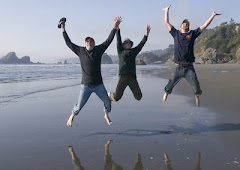If you don’t start dancing or break down in tears when you hear Jimmy Ruffin sing “What Becomes of the Broken Hearted” or Ben E. King doing “Stand By Me” (there’s also a heartbreaking video on YouTube of street musicians all over the world singing it) then you ain’t got any funky soul.
I know, this is ageism speaking. Who under 50 (or 60 maybe) knows who Jimmy Ruffin is (remember, this is a white girl speaking, who can never speak for the black community, who I’m sure know Jimmy Ruffin and Eddie Kendrick like they know their abc’s)? Their loss, I would say. They would say, in the person of my 29-year old son, what about Rage Against the Machine or Orishas? I happen to love Orishas—a great hip hop band from Cuba—but the rhythm and blues we grew up with came from a different place and time and evokes a different response.
When I was in fifth and sixth grade I watched American Bandstand on TV every day after school. My mother was at work, and this was my time to see the whole weird mix of acts Dick Clark brought to the stage: Stevie Wonder, Lovin’ Spoonful, Rascals, Shirelles, Bobby Rydell, Beach Boys, and Marvin Gaye. When the show was broadcast from Philadelphia, the teenagers who came to dance were all Italian kids with names like Carman, Dominick, Michael, and Loretta. I could tell by who was dancing with whom whether they were still going steady, whether they had just broken up, and whether there was any hope that they would get back together.
When I was a teenager, the music I listened to, locked in my room doing homework or lying on my bed daydreaming, came from the KOMA airwaves all the way from Oklahoma City (I was in Colorado Springs, remember). For some reason K-O-M-A had this powerful frequency that broadcast Motown, Philly soul, Memphis soul, the British invasion, and bubblegum pop all over the Rocky Mountain West to the bedrooms of fourteen- and fifteen-year olds like me, dependent on the radio to know what was going on musically. I was just starting to buy 45s, but albums were still too expensive for my measly weekly allowance. When I got my first job at sixteen—lifeguard at a motel swimming pool in Manitou Springs at $1.10 an hour— I still couldn’t afford many LPs.
But I did get to see a lot of groups at the Colorado Springs City Auditorium, like the Rascals (called the Young Rascals back then), the Beau Brummels (remember “Laugh Laugh”?), Spanky and Our Gang, and even Eric Burden and the Animals. I never wondered at the time how come these groups came to little old Colorado Springs, Colorado, for some unheard of cheap ticket price, but in retrospect I assume they played the big venues in Denver and drove the sixty miles down to the Springs for a little extra cash before flying out to Phoenix or Salt Lake City.
I was fourteen when the Beatles came to New York and played on the Ed Sullivan Show. The radio had been playing “I Wanna Hold Your Hand” and “She Loves You” but I was unprepared for the thrill I felt when I saw them bouncing their heads and tapping their feet to the screams of the fourteen-year olds who were actually in the TV audience. Their musical debt to rhythm and blues was evident in this visceral response. My father always ate dinner on Sunday night on a TV tray in front of Ed Sullivan, but this time we were all there: my mother, my two sisters, and me. And when he said, “They’ll never last,” I knew he was utterly, and irrevocably, wrong because anyone who could touch my soul the way they did, the way Marvin Gaye did singing “Sexual Healing,” the way the Shirelles did singing “Will You Still Love Me Tomorrow,” Curtis Mayfield and the Impressions singing “You Must Believe Me,” Aretha Franklin singing “Prove It,” and Jimmy Ruffin singing “What Becomes of the Broken Hearted,” would last forever in the heart and mind of a fourteen-year old going on 60.
Subscribe to:
Post Comments (Atom)

No comments:
Post a Comment